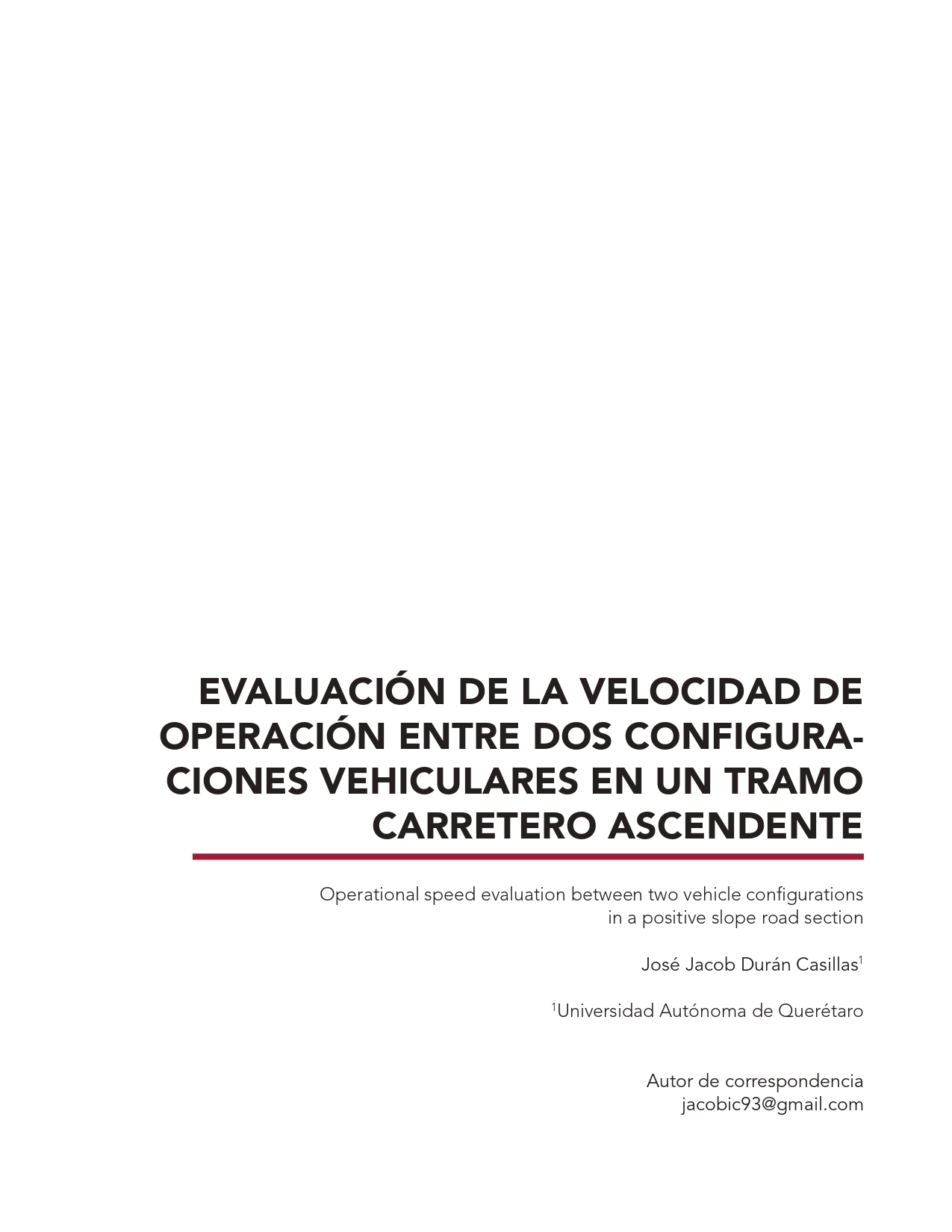Abstract
Among the many factors that trigger road accidents, speed is undoubtedly the preponderant factor to raise accident rates. The
belief is that high speeds are the cause of accidents, but not necessarily, this belief is blunt, but that the high-speed differentials observed in the fleet could have worse repercussions. In order to take measures in this regard, the speed sample is an element to
take into account and must be done with approximations close to reality. The data analysis is done through an evaluation of the 85th speed percentile in 6 different points of the Mexico - Queretaro highway road section, which has generated controversy in recent years due to accident generation. This section is representative because it has a high TDPA index in the federal highway network, not only in light vehicles but also in cargo vehicles. A speed differential field evaluation of Light Vehicles (A) and cargo
vehicles is presented, which in this case are exclusively the nine axles Double Articulated Tractors (T3 S2 R4), where product of the possible overload and slope effect, there are records of vehicles that drive up to 20 km / h, which could represent a risk to road safety.

This work is licensed under a Creative Commons Attribution-NonCommercial 4.0 International License.

